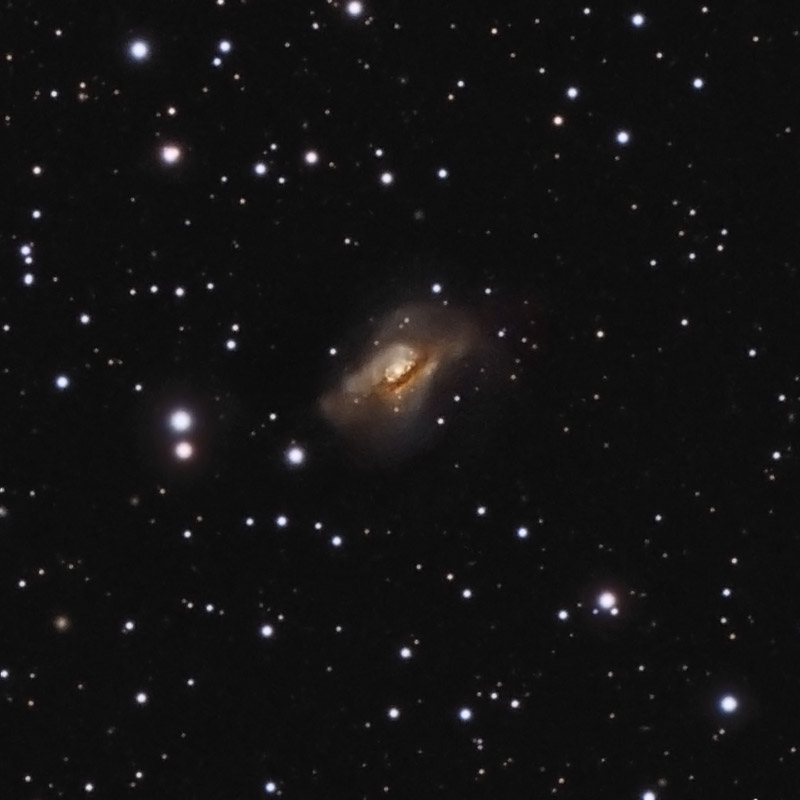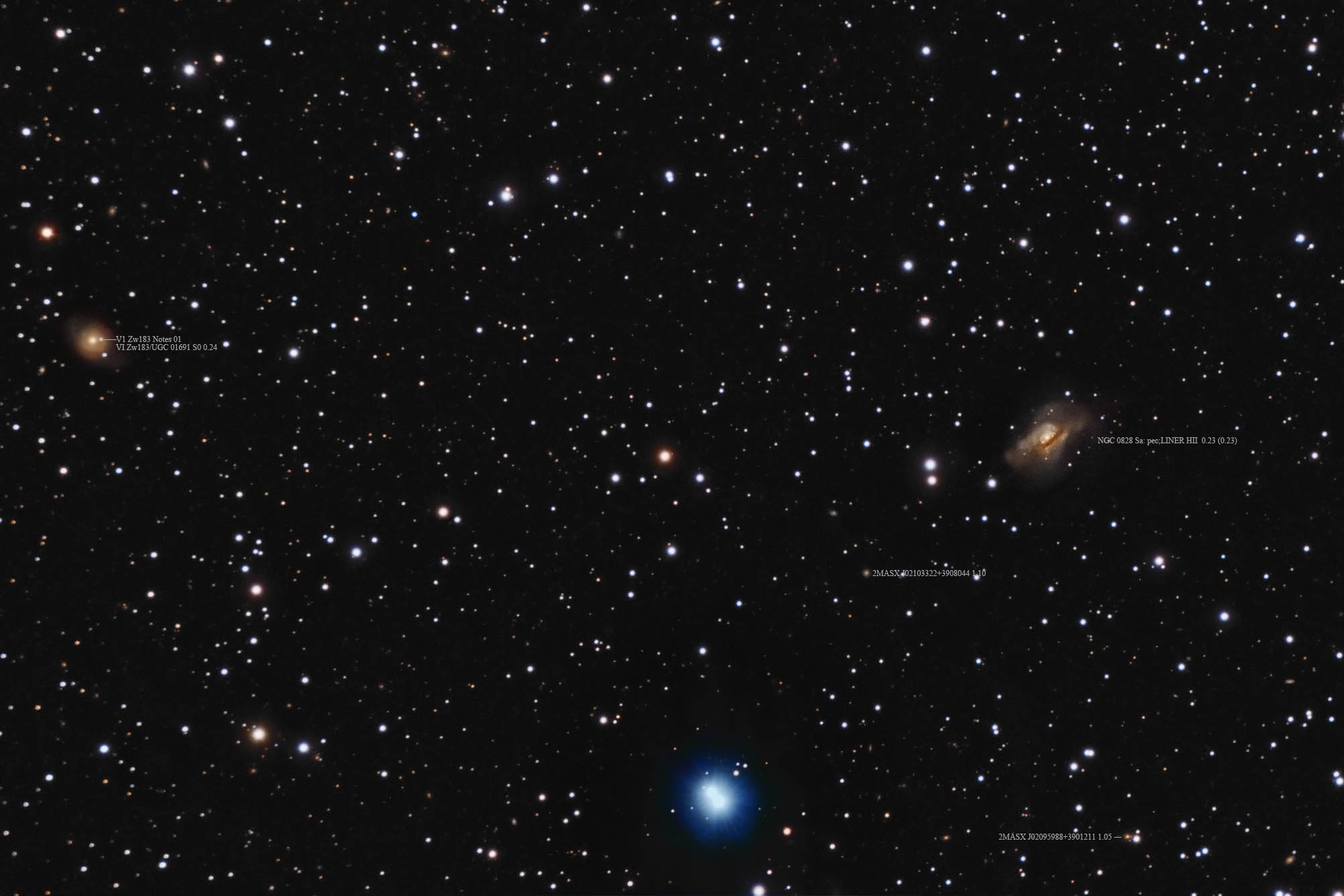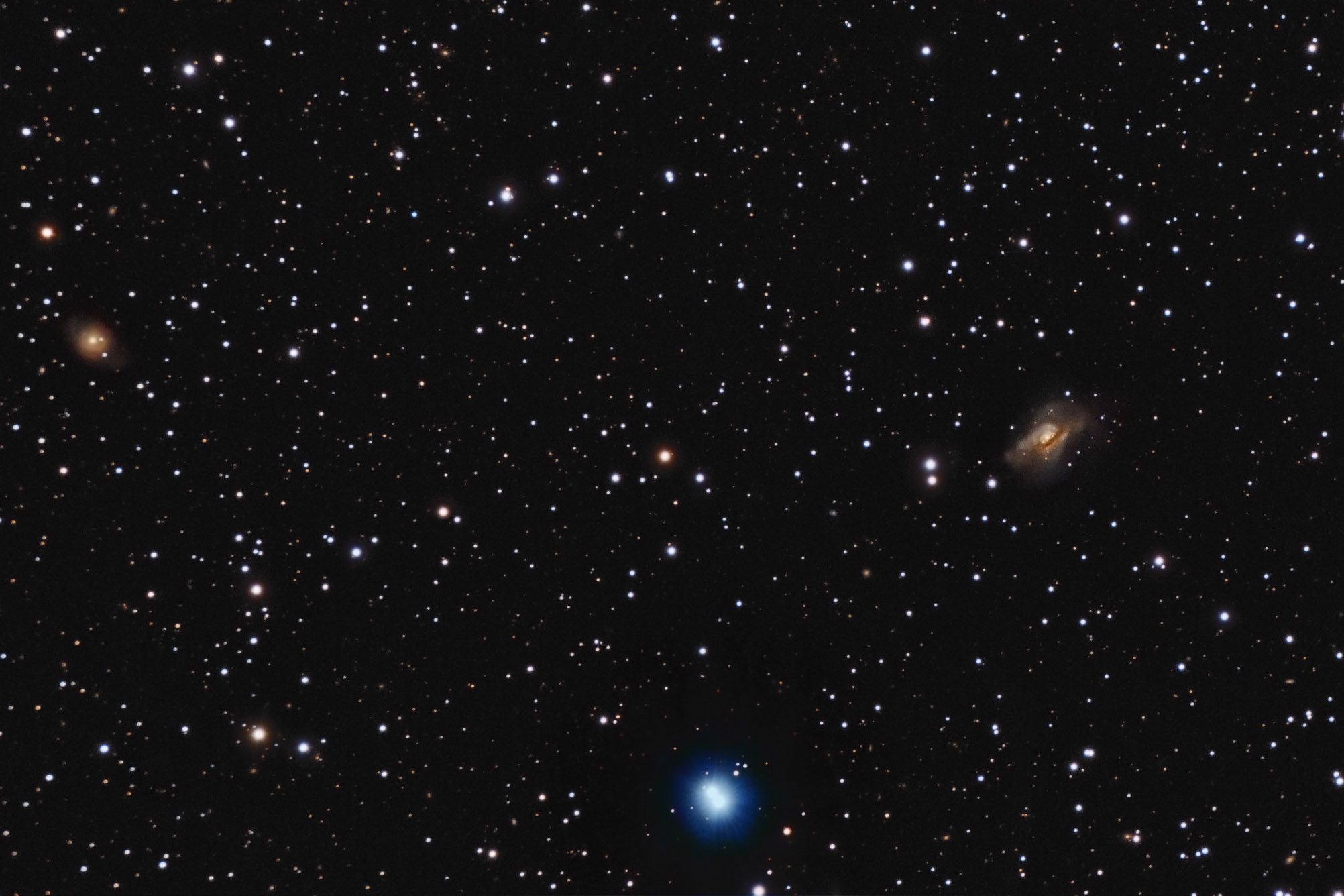| Description | Images |
Object name: NGC0828Designation(s): NGC0828, NGC 828 is a very beautiful galaxy that I'd have expected to be very well known but is virtually unheard of. I can't find any professional images of it and only a half dozen amateur images. It is a highly disturbed spiral with a huge dust lane. Most sources attribute these features to it being a merger in progress using several different lines of reasoning. It is classified as Sa: pec and has a LINER core with strong HII from the core as well. Radio shows two peaks 4" apart in the core which could be the massive black holes of the two galaxies one of which is off center. The galaxy is about 230 million light-years distant both by redshift and the median value of non-redshift determinations. That distance would make it some 150,000 light-years across including the plumes. Prior to the interaction, I would assume it was far smaller but it is hard to understand what it might have been like prior to the merger. My wild guess puts it at about 55,000 light-years before the collision. While NED doesn't list it as being a starburst galaxy one paper I found does. Related Designation(s):2MASS J02100936+3911273, 2MASS J02100954+3911253, 2MASX J02100957+3911253, 2MASXi J0210095+391125, 6C B020705.4+385722, 87GB 020707.1+385706, 87GB[BWE91] 0207+3856, AKARI J0210093+391125, B2 0207+38, B3 0207+389, CGCG 0207.1+3857, CGCG 522-125, CGPG 0207.1+3857, GB6 J0210+3911, IRAS 02071+3857, IRAS F02070+3857, LDCE 0153 NED001, MAPS-PP O_1225_0064873, MCG +06-05-092, NGC 0828, NGC0828, NVSS J021009+391125, PGC 008283, SSTSL2 J021009.51+391124.9, TXS 0207+389, UGC 01655, UZC J021009.6+391126, VI Zw 177, [MLO2002] J021009.6+391125, [UIY2014] 05, |


